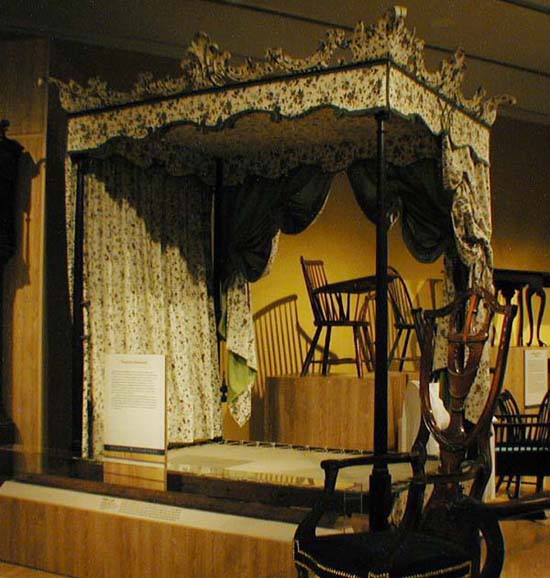
High-Post Bedstead
Attributed to Samuel White
Petersburg, Virginia, 1790-1810
Mahogany with red gum, yellow pine, and maple
Most early high-post bedsteads made use of curtains that hung from metal rings threaded on iron rods placed between the posts. This Virginia bedstead illustrates a more complex system that retains its original lath frame. Resting atop the posts, the frame is fitted with pulleys over which cords were placed to draw the curtains up in what was known as drapery. When the curtains were in the raised position, the cords were tied off around pairs of brass cloak pins screwed into the posts. The whole assembly was topped off with an ornate cornice akin to the reproduction example shown here.
Structural details reveal this bedstead to be the work of Samuel White of Petersburg. Nothing is known of White's training or origins, but his active role in the Petersburg furniture trade for nearly forty years suggests that he was a successful businessman.
